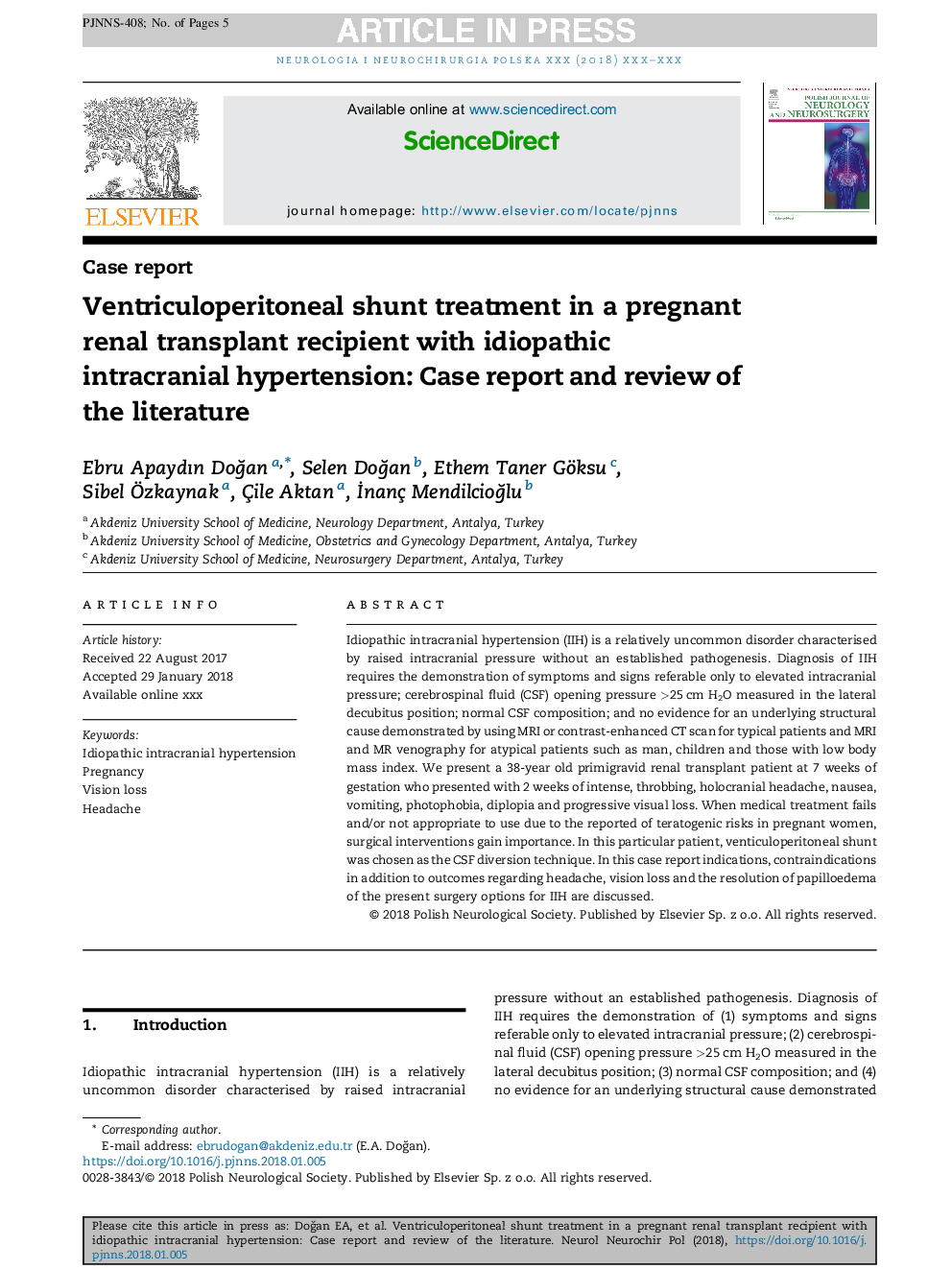| Article ID | Journal | Published Year | Pages | File Type |
|---|---|---|---|---|
| 8457192 | Neurologia i Neurochirurgia Polska | 2018 | 5 Pages |
Abstract
Idiopathic intracranial hypertension (IIH) is a relatively uncommon disorder characterised by raised intracranial pressure without an established pathogenesis. Diagnosis of IIH requires the demonstration of symptoms and signs referable only to elevated intracranial pressure; cerebrospinal fluid (CSF) opening pressure >25Â cm H2O measured in the lateral decubitus position; normal CSF composition; and no evidence for an underlying structural cause demonstrated by using MRI or contrast-enhanced CT scan for typical patients and MRI and MR venography for atypical patients such as man, children and those with low body mass index. We present a 38-year old primigravid renal transplant patient at 7 weeks of gestation who presented with 2 weeks of intense, throbbing, holocranial headache, nausea, vomiting, photophobia, diplopia and progressive visual loss. When medical treatment fails and/or not appropriate to use due to the reported of teratogenic risks in pregnant women, surgical interventions gain importance. In this particular patient, venticuloperitoneal shunt was chosen as the CSF diversion technique. In this case report indications, contraindications in addition to outcomes regarding headache, vision loss and the resolution of papilloedema of the present surgery options for IIH are discussed.
Related Topics
Life Sciences
Biochemistry, Genetics and Molecular Biology
Cancer Research
Authors
Ebru Apaydın DoÄan, Selen DoÄan, Ethem Taner Göksu, Sibel Ãzkaynak, Ãile Aktan, Ä°nanç MendilcioÄlu,
